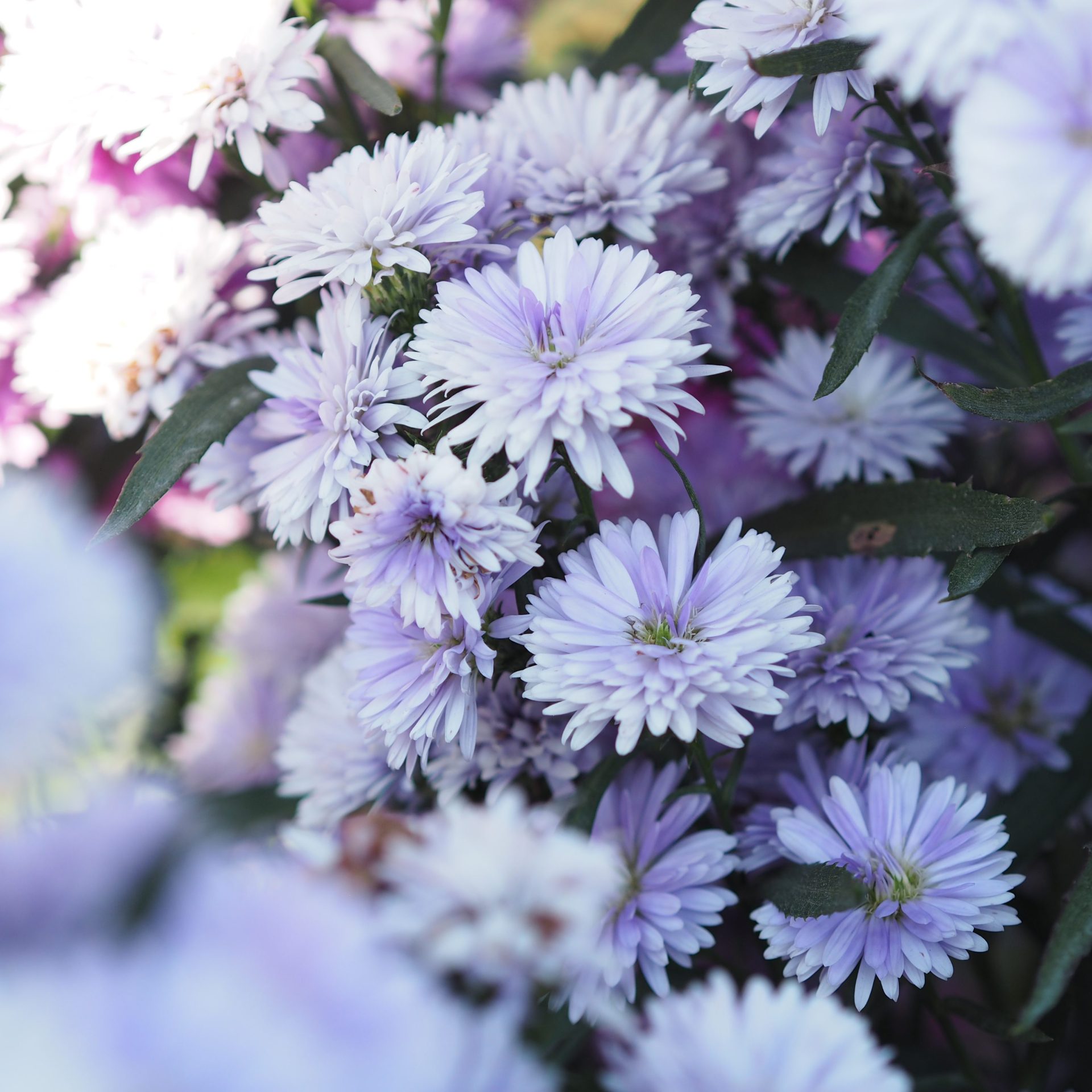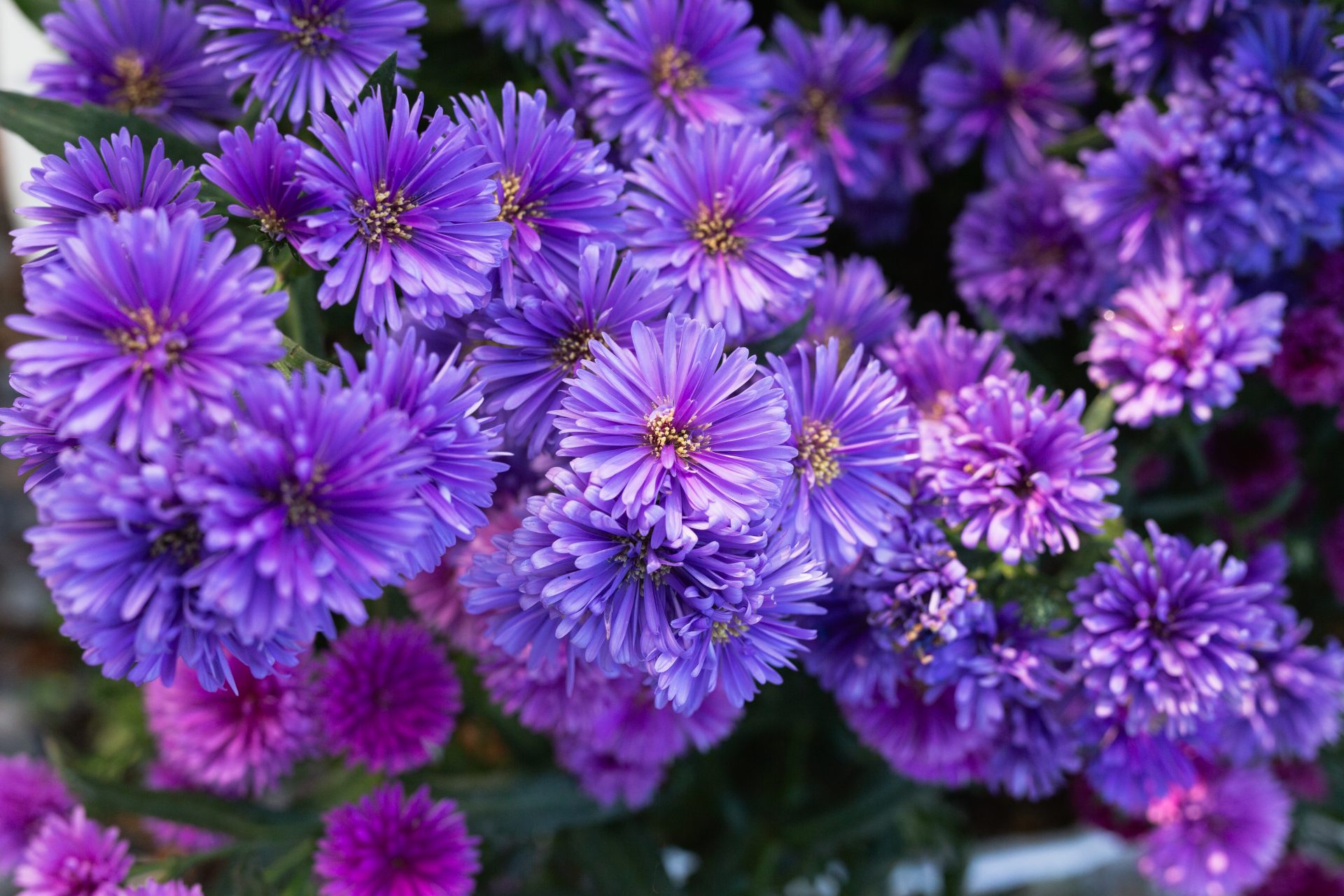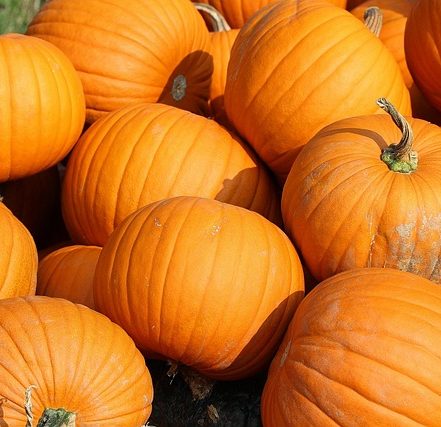Asters, the star-shaped flowers that light up our gardens as summer fades, are a beloved sight in British gardens. Their vibrant hues and resilience make them a popular choice for borders and containers. Asters are versatile plants that can be used in a variety of garden settings, and look particularly striking when paired with grasses, sedums, and ornamental cabbages.
Asters are known for their adaptability and can thrive in a variety of growing conditions. While they often prefer full sun, many species can tolerate dappled or partial shade. This makes them a great choice for gardens with less than ideal sunlight exposure. Asters can also tolerate a variety of soil types. While they generally prefer slightly moist, well-drained soil, they can adapt to different soil textures. However, it’s important to note that species prone to powdery mildew, may benefit from slightly moister conditions to help prevent fungal growth.
Renowned for their vibrant and diverse colour palette, adding a splash of beauty and cheer to gardens and bouquets alike. Asters typically have sturdy stems that support a cluster of flowers in a wide range of colours and sizes. Their versatility makes them ideal as a cut flower for arrangements.




